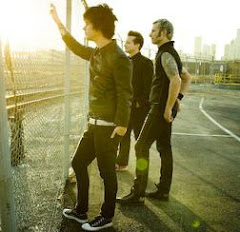
On Sunday night Pat and I went to see a screening of Allen Ginsberg’s poem “Howl” at the Jacob Burns Film Center. The film was followed by a question and answer session with the co-directors, Robert Epstein and Jeffrey Friedman, conducted by Janet Maslin of the New York Times. I had looked forward to seeing “Howl” since it premiered at the at the Sundance Film Festival last January.
But, to fast forward to the Q & A, the very first question Maslin posed to Epstein and Friedman was simply (and I paraphrase), “what did sort of film was it?” It’s neither a documentary nor a dramatization. The film has practically no original dialog because the entire script is constructed from the text of the poem, interviews given by Ginsberg, and the trial transcript. Their answer was a rather coy, “it’s a poetic event.”
I’d buy that - simply because you can’t pigeon-hole a film that’s part animation, part poetry reading, and part dramatization. By way of back story, Epstein and Friedman were brought in by the Ginsberg Estate in 2002 to dramatize the poem and the subsequent obscenity trial in time for the celebration of its 50th anniversary - 2007! Along the way the project took on an added dimension when they decided to animate the poem itself - and secured the unique talent of Erik Drooker for those sequences. Drooker worked with Ginberg more than a decade earlier to produce a volume of “illustrated” poems (which included parts of “Howl”). As an aside, Drooker’s mom was in the audience Sunday night.
Getting back to the film, James Franco is spot on as the 29 year old Allen Ginsberg. It opens with Ginsberg (these sequences were filmed in black and white) at infamous Six Gallery reading that introduced “Howl” to as yet unsuspecting America. The reading quickly morphed into the first animation sequence. From that point on, the film jumps to and from the reading, the animation, the trial, and an interview Ginsberg gives to an unseen reporter. The animation, which was done entirely in Thailand, is a phallically graphic Fantasia-like experience. As a stand alone interpretation of “Howl,” it would be an interesting to sit through in its entirety.
The interview Ginsberg gives to the unseen reporter is meant to be one that Ginsberg gave to Time Magazine in Rome (which has subsequently been lost to time). Ginsberg was never at the trial, not even in the United States, when these events unfolded. He was actually in Tangiers - and was flown to Rome by Time Magazine for the interview. Lawrence Ferlinghetti, who was actually the defendant in the obscenity trial, told Ginsberg he wasn’t needed (nor relevant) for the trial. But Ginsberg did correspond with him about the progress of the trial.
Jake Erlich, one of the pre-eminent first amendment lawyers of that generation (and played here by Jon Hamm) defended Ferlinghetti at the trial. The district attorney was played by David Straitham and the judge was played Bob Balaban. While the outcome wasn’t as foregone as many people might imagine today (thanks to hindsight), the film makers took some liberties with the recreation that made it seem much closer than what actually transpired. The prosecution was only able to muster two witnesses to testify. Both (played by Mary Louise Parker and Jeff Daniels) were shown.
The defense, on the other hand, had nine witnesses testify (and could easily have doubled that total). But the Epstein and Friedman opted to show only one (capably played by Treat Williams). Nor did the film dramatize any of the attendant publicity that followed the course of the trial (aside from an occasional photo of a newspaper clipping). Even more remarkable, principal actors in the events didn’t get any lines - most notably Ferlinghetti (who sat at the witness table and uttered not a word throughout the proceedings)! In a similar vein, when Kerouac and Cassady were portrayed - neither one spoke a word of dialog. What’s up with that? While the film is about all about “Howl” - each of the aforementioned had plenty to say about the poem and Ginsberg himself!
That said, this is a must watch film for any fan of the beat generation. Franco, himself, is a huge fan of the beats and brought that knowledge and interest to the role. He was the first actor hired for the project and spent months researching the young Allen Ginsberg while the rest of the cast took shape. Interestingly, the last actor cast was Jon Hamm - perhaps the one with the most period experience from his “Mad Men” character Don Draper. As Epstein and Friedman related it, he was hired on Friday and was on the set Monday morning shooting his scenes!
Don’t pass up seeing this film on the big screen :D
Tuesday, September 21, 2010
allen ginsberg's "howl" movie review
Labels:
allen ginsberg,
beat generation,
movies,
reviews
Subscribe to:
Post Comments (Atom)




















1 comment:
Thanks for your insights! I'm super excited for the Howl movie and discovered your site looking for info about it. I also discovered a great BBC interview on Google Video that you'll love. It comes from '94 and it's a long, freewheeling conversation that reminds me what a funny, insightful guy old AG was. Enjoy: http://www.joenolan.com/blog/?p=622
Post a Comment